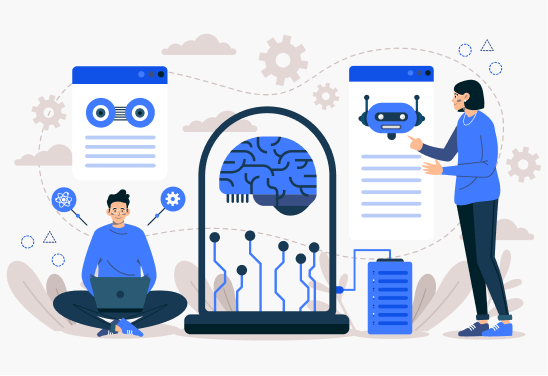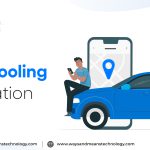Following best practices in AI and ML development is crucial for a number of reasons:
- Align with Business objectives: Best practices help ensure that the AI and ML models are developed with the specific business objectives in mind, and that they are tailored to meet the unique needs of the business.
- Model Quality and Robustness: Best practices help to ensure that the models are of high quality, robust and generalizable. This means that the model will perform well not only on the training data, but also on unseen data.
- Explainable and Interpretable: Best practices also help to ensure that the models are explainable and interpretable, so that stakeholders can understand how the model is making its predictions and decisions.
- Fairness: Best practices also help to ensure that the models are fair, and don’t discriminate against certain groups.
- Compliance: Best practices help to ensure that the models are developed in compliance with relevant data privacy and security regulations.
- Continuous Improvement: Best practices encourage continuous improvement of the model through regular monitoring, updating and retraining the model with new data.
- Cost-effective: By following best practices, organizations can avoid costly mistakes and ensure that their AI and ML investments are being used effectively.
Overall, following best practices in AI and ML development helps to ensure that the models are effective, efficient, and aligned with business objectives, as well as being fair and transparent.
Here are the best practices that should be followed while developing any project using Artificial Intelligence and Machine Learning to achieve best results which we at
Ways and Means Technology have developed after gaining lot of experience of developing advance enterprise AI and ML based application for our clients globally:
- Define clear goals and objectives for the AI/ML model.
- Understand and pre-process the data, including cleaning and normalizing it.
- Split the data into training, validation, and test sets.
- Choose an appropriate model architecture and optimization algorithm.
- Train the model and monitor its performance on the validation set.
- Fine-tune the model’s hyperparameters.
- Evaluate the model’s performance on the test set.
- Deploy the model and monitor its performance in the real-world.
- Continuously improve the model by updating with new data, retraining and fine-tuning the model.
- Properly document the development process, including the data, model architecture, and performance metrics.
- Provide interpretability, explainability and fairness of the model.
- Strictly adhere to data privacy and security regulations.
- Use techniques such as cross-validation and ensemble methods to improve model robustness and generalization.
- Continuously monitor and audit the model for bias and fairness.
- Use version control for tracking changes in the code and data.
- Avoid overfitting by using regularization techniques and early stopping.
- Use automated tools for hyperparameter tuning and model selection.
- Use cloud-based infrastructure for training and deploying large models.
- Use ensemble methods to improve model performance by combining the predictions of multiple models.
- Continuously evaluate the model’s performance in the real-world and update it accordingly.
- Implement an active learning approach to improve the model’s performance over time by actively collecting and labeling new data.
- Have a clear communication and collaboration channels with business stakeholders and other teams to align the model’s development with business objectives and ensure that it is effectively integrated and used in the business.
- Continuously monitor the model’s performance and update it as necessary to ensure it is still meeting the business objectives.
- Regularly test the model’s performance on unseen data, and use this data to improve the model’s robustness and generalization.
- Use explainable AI techniques to ensure the model’s predictions and decisions are transparent and interpretable to stakeholders.
- Be prepared to handle edge cases and unexpected inputs, and ensure the model can handle these cases appropriately.
- Use automated testing and monitoring to ensure the model is functioning correctly in production.
- Stay up-to-date with the latest developments and best practices in AI and ML, and apply these to your model development.
- Have a clear and well-defined process for addressing and mitigating ethical concerns that may arise during the development and deployment of the model.
- Use a continuous integration and delivery approach to streamline the model development and deployment process.
Overall, the best practice in AI and ML development is to make sure the development is aligned with the business objectives, the model is robust, generalizable, interpretable, fair and the model is continuously monitored and updated to ensure it is meeting the objectives.
Ways and Means Technology is a leading provider of AI and ML development services. Our team of experts has a proven track record of delivering high-quality, innovative solutions that drive business growth and success.
We understand that every business is unique and has different needs. That’s why we work closely with our clients to understand their goals and objectives, and tailor our solutions to meet their specific requirements. We have experience in a wide range of industries and business areas, including healthcare, finance, retail, and manufacturing.
Our AI and ML development services include:
- Data pre-processing and cleaning
- Model architecture design and optimization
- Hyperparameter tuning and model selection
- Training and deployment
- Continuous monitoring and updating
We are well-versed in the latest technologies and best practices in AI and ML, and use state-of-the-art tools and techniques to deliver the best possible results.
We also prioritize interpretability, explainability, and fairness of the models. Our team is well-versed in the latest techniques for ensuring the model’s predictions and decisions are transparent and interpretable to stakeholders.
At Ways and Means Technology, we pride ourselves on providing exceptional customer service. We work closely with our clients to ensure they are satisfied with the results and that the model is effectively integrated and used in their business.
If you’re looking for a reliable and experienced partner for your AI and ML development needs, look no further than Ways and Means Technology. Contact us today to learn more about how we can help you take your business to the next level.


